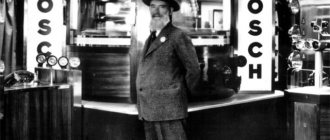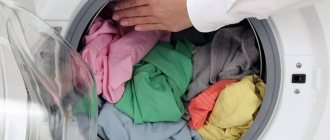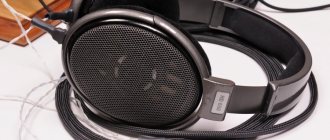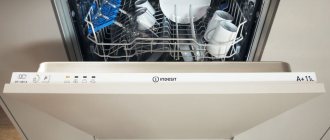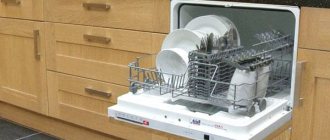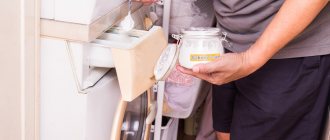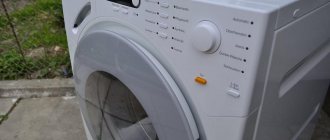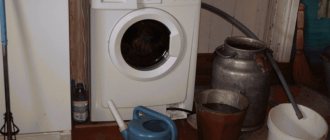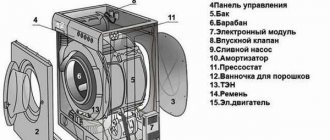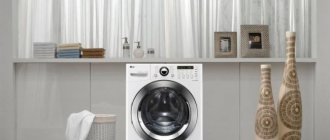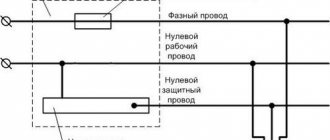Today, there are different types of sewing machines on the household appliances market, each of which has great functionality. Essentially, manufacturers have reached the same heights in their design (they just went about it in different ways, as a result, their products differ in a set of unique features).
In this article we will talk about the characteristics and features of the equipment, and the companies that produce it. This information will help you purchase a device that meets all your preferences.
General characteristics of modern sewing machines
Before comparing devices with each other, it is necessary to talk about their common features. We will only talk about electric-powered machines, and not about manual or foot-operated mechanical ones.
All new types of devices have a light plastic or lightweight metal body . This makes them no less reliable, since there is a frame inside. Chassis parts are still made of metal.
Modern devices are highly powerful . They easily sew through thick fabric, even folded in several layers. They also cope with leather, but there’s no need to talk about light materials (silk, knitwear, etc.). Power is one of the main requirements for technology.
Sewing speed is also considered an important characteristic . Over the past few years, it has increased noticeably: it began to be regulated by the force of pressing the pedal or set to special modes. All units now have a free arm platform for processing trousers, cuffs or other narrow parts.
The last quality can be called functionality .
Any unit makes at least five seams, including special elastic ones for knitwear, imitating overlock, and some even carpet. The kit also includes a basic set of feet to expand its capabilities.
Types of sewing machines by type of control
There are three types of sewing machine control. Read more about each below.
Mechanical
Almost all outdated models of cars can be classified as mechanical. However, high-quality and fashionable things are also made using such devices. They work thanks to manual or foot action on the elements of the mechanism. Such models only sew straight stitches, which significantly limits their functionality. In addition, they require frequent changes in settings to suit a specific fabric structure.
REFERENCE! Prominent representatives of manually operated machines are the Podolsk, Singer and Chaika models.
Electro-mechanical
These models are modern and most popular mechanisms that operate by pressing the electric drive pedal. The machines are capable of performing various functions, including sewing on buttons. The variety of seams will please tailors of various skill levels. The best-selling brands include devices from the following companies: Bernina, Juki, Janome and others. A high-quality machine of this type in a budget price category can be purchased from 6 thousand rubles.
Computerized
This category includes more expensive cars, and they often scare off potential buyers with their price (from 20 thousand rubles). However, they have undeniable advantages:
- High level of quality and reliability of assembly.
- Management is carried out using software. Each model is equipped with a miniature computer and has a convenient screen.
- Ease of operation. Simply select the desired function on the control panel.
- Variety of stitch types (more than one hundred types).
- The risk of making a mistake is minimal, because The program gives recommendations on sewing and choosing settings.
- The shuttle in most models is located horizontally, which ensures silent and comfortable operation.
- Embroidery function available.
Distinctive features
Each concern has its own achievements in the field of equipment production. It is better to call them features that allow a person to distinguish one device from another.
Many of the manufacturers retained the traditional vertical shuttle design, while others began to use a horizontal one. The bobbin is now simply inserted from above, which makes threading easier and prevents it from breaking or tangling. Some devices have special devices that allow you to do this automatically. Winding onto the bobbin began to be done through a needle (on some types of equipment it now turns off automatically).
To facilitate the advancement of fabric, a special mechanism was invented - a double feed conveyor. Some build it into the design, others produce it in the form of an additional foot, used in certain cases.
To support beginning tailors, designers came up with a so-called “sewing advisor” located on the device body. This mechanism determines the correct settings for operations when using different types of matter.
Manufacturers also pay attention to the loop. Nowadays you won’t find a machine where, when basting, you need to manually unroll the fabric. The buttonhole can be processed in several steps, switching between reverse and tack. The seamstress immediately sets the desired size or simply determines the diameter of the button, and the mechanism will automatically make a buttonhole for it.
These technological subtleties make sewing much easier, making it better quality. But in addition to the special achievements of a particular manufacturer, equipment is distinguished by classes of excellence: the higher it is, the easier it is to work.
Difference by class
All types of household sewing machines are divided into three main ones:
- with mechanical selection of seams (electromechanical);
- computerized (with a computer board);
- computer sewing and embroidery machines.
Each of these models differs in control method, design complexity, functionality and price.
Electromechanical
Engineers call them the cheapest and most straightforward, since all the seams they know how to make are applied to the front panel. By turning the wheel you select the one you need, set the necessary adjustments (stitch length and width, thread tension) and start sewing.
Manufacturers have made some improvements even to such a simple type of technology. For example, you will find all the tips for operating the device on its body. Threading the upper and lower threads has long been simplified (instructions are needed only in difficult cases). The designers equipped them with built-in electronics that provide maximum needle piercing force at low speed.
If you want to purchase such a machine, then you should know about the large selection of both functional and decorative seams that it provides to its owners. Let us add to what has been said that this particular class of equipment is especially popular and widely represented in Russia. She knows all the most important things, and the simplicity of execution will attract every seamstress.
Computerized
This type has many additional functions. Here, the built-in board allows you to control the unit by simply pressing a key.
In addition to the usual working stitches, they have a wide variety of decorative and finishing stitches with embroidery elements that can be combined and create your own compositions. The memory cells here are quite large: 30-60 characters each. Due to this, your programs are remembered and reproduced when the need arises.
There is an alphabet and numbers. Also, the equipment itself monitors the adjustments and provides recommendations for settings on the information display.
Older women are frightened by the word “computer”. You should not be afraid of new products: it is the computer that makes management easier. Thanks to the installed board, the machine itself “thinks” for you: which needle is best to install for the material and the selected seam, what stitch length will be optimal.
Sewing and embroidery machines
These are high-quality units equipped with an embroidery unit. In addition to professional sewing, they offer automatic embroidery on a hoop. Today their number has increased, but even now experts classify them as “rare”. Each company strives to create its own model in this class. However, the high price does not allow their mass production.
The cost corresponds to unlimited possibilities: more than 500 working and decorative operations, about 10 types of loops, automatic thread tension adjustments, needle operation in more than 20 directions, etc.
Operation on such a device is surprisingly simple and comfortable: everything in it is thought out to the smallest detail. Its main advantage is that it automatically embroiders with satin stitch, cross stitch, hemstitching, cutwork, and quilting. Thematically selected drawings make up a large album that you receive upon purchase. From here you will be able to order the designs you like in the future and expand your home library of embroidery cards.
The possibilities don't stop there. Using a personal computer, you create compositions from existing designs, and also come up with your own subjects for embroidery. To do this, it is advisable to purchase additional software. In some designs, the computer is directly connected to the equipment, in other cases it is possible to connect through a special storage device. This is very convenient, since you can create a design on your work computer and do embroidery at home in the evening.
Overlock
Within this section, we should mention overlockers. These devices are suitable for those who value high-quality seam processing. In fact, this is a very useful addition to the main device. 2, 3, 4, 5 thread overlockers sew, overcast and trim fabric at the same time.
This type is very often found on the market, its model range is constantly updated. Some types have a free sleeve and are even computerized. The introduction of electronics into the design has significantly expanded their capabilities: individual adjustments are now automatic, and those that need to be done independently will be displayed on the information display. The differential feeding of the material will make it easier to work with knitwear, and a wide selection of additional feet will allow you to perform invisible hems, sewing on braids, beads, folds and ruffles.
How to operate a sewing machine?
According to the type of control and operating principle, sewing machines are:
- Electronic.
- Computer.
- Electromechanical.
- Sensory.
- Mechanical.
Let's look at each in more detail.
Electronic
Electronic sewing machines
All user interaction with the device occurs through regular buttons. At the same time, the program monitors the location of the presser foot, hook, and other things.
Tip: Remove the plate regularly to clean it of debris.
Advantages:
- The result is a high-quality stitch.
- Users note the comfortable pedal.
- Reliability, repairs may not be needed even after years, if you take care of the machine.
Flaws:
- High price.
Meeting the Manufacturers
All companies can be divided into two groups:
- European ones that have retained their production in their homeland (these include: Pfaff, Husqvarna and Bernina);
- those whose factories are located in countries with cheap labor (Brother, Janome, Jaguar, etc.).
To make your choice easier, we offer you a table that contains information about the most popular concerns for their production.
| Singer is still associated with the old German brand, even though it was originally an American company with a subsidiary in Germany. Today it is a huge transnational concern, under whose brand it produces household appliances and furniture. Singer equipment is assembled in Taiwan, Brazil, China and even in Russia (at the Podolsk plant). Their products account for almost half of all units produced in the world. |
| The German company Pfaff has been producing its equipment for more than 100 years, is one of the leaders and is very popular in the Russian Federation. It is famous for the production of industrial sewing and embroidery machines. |
| The Swedish company Husqvarna boldly competes with the previous brand. It has a 300-year history (opened since 1879). For the first time after a break (it was after the revolution in our country), Husqvarna appeared a little later than Pfaff. But it quickly conquered the market, surprising with the comfort and elegance of the models produced. |
| Another world leader can be considered the manufacturer Bernina. He actively asserts his position: his products are prestigious and expensive, but at the same time extremely reliable. In general, these three companies following each other can be said to be competitors of the same level: here there is German integrity and order, Swedish thoroughness and reliability, Swiss precision and loyalty to traditions. |
| Janome is the largest manufacturer, with three large factories in Taiwan, Japan and Thailand. He produces cars under his original brand, and also assembles them for European companies. He has more than 250 models to his credit. |
| Japanese Brother is a serious competitor. Producing both industrial and household devices. Brother has a very wide presence in the market and is also among the top sellers. |
When characterizing the devices of these brands, it is worth noting the progressive approach to updating models (especially electromechanical ones). Manufacturers are dynamically expanding their range based on consumer demand.
In addition to geographical differences in product production, these two groups differ fundamentally in sales policies. In Russia, only Pfaff, Husqvarna and Singer have official representative offices that control the service network and work to create the company’s image and maintain its reputation. Their customers are more protected: in difficult cases they always have the right to turn to them for help.
The second fundamental difference concerns production itself. Brother, Janome and Singer emphasize a variety of models, low prices, a large number of operations in each model with comparative ease of execution. Other brands are based on a narrower range with high-quality, perfected equipment.
Buying a car
When you choose a device, first of all try to focus on your own needs and preferences.
During the demonstration, familiarize yourself with the features of the model and the basic skills of its management. Ask the seller to check the loop and seams (two or three are enough). You can take pieces of material from home and test everything on them. When operating the device, look at its chassis: there should be no obvious extraneous noise or strong vibration.
Ask the seller for operating instructions. Very often, their violation leads to poor-quality results or malfunction. Follow the sewing technology, and then the machine will do everything flawlessly.
Employees of the A-Iceberg SC repair sewing machines of all brands (from the budget Aurora to semi-professional equipment from Brother, Pfaff, Juki, Husqvarna, etc.). Diagnostics and repairs are carried out at the customer’s home, and the equipment itself is not transported for service. To call a specialist, call us at 8 (495) 228-31-78
any day from 7:00 to 23:00 or leave an online application on the website.
Spare parts for sewing machines
If necessary, it is possible to buy a motor for a sewing machine and install it, although it is not an easy task. Engine prices are sometimes high. The option of assembling one sewing machine out of two looks attractive, which repair services can do. If necessary, inquire about the availability of warranty service centers nearby and ask for spare parts. I don’t want to travel far away to buy a belt for a sewing machine.
Shuttles are expensive. In terms of adjustment and reliability, models with a vertical double-running shuttle are praised. However, such sewing machines are suitable for the handicraft tailor craftsman; home users will be put off by the price. Good Bernina instruments are comparable in cost to small metal working machines.
From the above it is clear that the availability of spare parts plays a big role.
Bernina sewing machine
It is difficult to get a simple mechanical sewing machine on the market today. Turning the handle has become unfashionable. Each model will offer a lot of stitch options, often models with software control, and sophisticated ones have their own operating system and, with the help of an image editor, will easily allow you to fulfill creative ideas.
